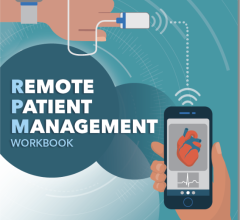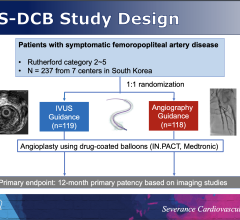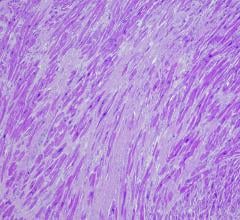
Getty Images
July 9, 2024 — Disparities in cardiovascular disease outcomes between urban and rural areas continue to widen, yet nearly half of U.S. counties do not have a practicing cardiologist. According to a new analysis published in JACC, the flagship journal of the American College of Cardiology, these counties tend to be more rural and socioeconomically disadvantaged, with a greater burden of cardiovascular disease, thus highlighting deep geographic disparity in access to cardiovascular care.
“While cardiologists are not the only determinants of cardiovascular outcomes, the lack of access to cardiologists in areas with greater prevalence of heart disease and mortality is incredibly concerning,” said Haider J. Warraich, MD, director of the heart failure program at VA Boston Healthcare, associate physician at Brigham and Women’s Hospital in Boston and the study’s senior author.
Upon analyzing all 3,143 U.S. counties, it was determined that 1,454 counties (46.3%) with 22 million residents had no cardiologists while the other 1,689 counties each had 24 cardiologists on average.
Other findings included:
- 86.2% of rural counties had no cardiologists.
- Average round-trip distance to nearest cardiologist was 16.3 miles vs 87.1 miles in counties with and without cardiologists.
- Compared to counties with cardiologists, counties without cardiologists had:
- 31% higher cardiovascular risk index
- Greater prevalence of all risk factors
- Higher age-adjusted cardiovascular mortality rates
- One-year shorter life expectancy on average
Counties without cardiologists were more likely to be rural with lower household incomes, greater uninsured levels, worse access to healthy food and primary care clinicians, and experienced more preventable hospitalizations. Of all the racial-ethnic groups examined, Native Americans were the most likely to be living in a county without a cardiologist. Counties lacking a cardiologist were unlikely to be on either coast of the U.S. and those in the South had the highest cardiovascular risk index.
“Our findings really highlight the critical need to find ways to mitigate deep disparities to improve cardiovascular disease outcomes for Americans living in rural and disadvantaged areas,” Warraich said. “Policy reforms, such as financial incentives to clinicians to practice in areas with marginal access or better leveraging telemedicine are potential options. The integration and coordination of cardiovascular care—especially with regard to prevention and risk modification—with the primary care is crucial.”
According to the researchers, broader policy interventions to widen broadband access and increase digital literacy, increase access to adequate health insurance coverage and reducing prevalence of modifiable risk factors would also have a sustainable impact.
“The findings of this study are both enlightening and alarming, shedding light on the severe geographic disparities in access to cardiovascular care across the United States,” said JACC Editor-in-Chief Harlan M. Krumholz, MD, SM, FACC. “This study underscores the urgent need for policy reforms and innovative solutions, such as financial incentives for clinicians and the expanded use of telemedicine, to bridge this gap. Ensuring equitable access to cardiovascular care is a crucial step towards improving overall public health outcomes and reducing preventable cardiovascular mortality.”
The ACC aims to achieve a culture of equitable cardiovascular care and heart health for all. ACC’s health equity strategy uses advocacy, education and science to acknowledge social determinants of health and eliminate disparities. Recently, the ACC held a webinar on effective solutions and interventions to improve cardiovascular care in indigenous communities.
The ACC also developed a Health Equity Heat Map, a population health map that uses location-based metrics to examine the demographics of local communities across the U.S. The map enables health care professionals to understand the scope of cardiovascular-related issues in the populations they serve.
For more information: www.acc.org


 July 31, 2024
July 31, 2024 








